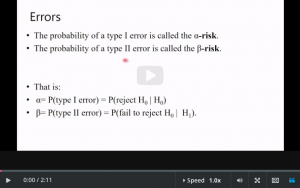- Home
- Courses
- Data Science
- Data Science Essentials & Machine Learning
Curriculum
- 8 Sections
- 69 Lessons
- 4 Weeks
Expand all sectionsCollapse all sections
- Before You StartIntroduction4
- Module 1: Introduction to Data Science12
- 3.1Principles of Data Science – Data Analytic Thinking
- 3.2Principles of Data Science – The Data Science Process
- 3.3Further Reading
- 3.4Data Science Technologies – Introduction to Data Science Technologies
- 3.5Data Science Technologies – An Overview of Data Science Technologies
- 3.6Data Science Technologies – Azure Machine Learning Learning Studio
- 3.7Data Science Technologies – Using Code in Azure ML
- 3.8Data Science Technologies – Jupyter Notebooks
- 3.9Data Science Technologies – Creating a Machine Learning Model
- 3.10Data Science Technologies – Further Reading
- 3.11Lab Instructions
- 3.12Lab Verification
- Module 2: Probability & Statistics for Data Science21
- 4.1Probability and Random Variables – Overview of Probability and Random Variables
- 4.2Probability and Random Variables – Introduction to Probability
- 4.3Probability and Random Variables – Discrete Random Variables
- 4.4Probability and Random Variables – Discrete Probability Distributions
- 4.5Probability and Random Variables – Binomial Distribution Examples
- 4.6Probability and Random Variables – Poisson Distributions
- 4.7Probability and Random Variables – Continuous Probability Distributions
- 4.8Probability and Random Variables – Cumulative Distribution Functions
- 4.9Probability and Random Variables – Central Limit Theorem
- 4.10Probability & Random Variables – Further Reading
- 4.11Introduction to Statistics – Overview of Statistics
- 4.12Introduction to Statistics – Descriptive Statistics
- 4.13Introduction to Statistics – Summary Statistics
- 4.14Introduction to Statistics – Demo: Viewing Summary Statistics
- 4.15Introduction to Statistics – Z-Scores
- 4.16Introduction to Statistics – Correlation
- 4.17Introduction to Statistics – Demo: Viewing Correlation
- 4.18Introduction to Statistics – Simpson’s Paradox
- 4.19Introduction to Statistics – Further Reading
- 4.20Introduction to Statistics – Lab Instructions
- 4.21Introduction to Statistics – Lab Verification
- Module 3: Simulation & Hypothesis Testing16
- 5.1Simulation – Introduction to Simulation
- 5.2Simulation – Start
- 5.3Lab
- 5.4Simulation – Demo: Performing a Simulation
- 5.5Simulation – Further Reading
- 5.6Hypothesis Testing – Overview
- 5.7Hypothesis Testing – Introduction
- 5.8Hypothesis Testing – Z-Tests, T-Tests, and Other Tests
- 5.9Hypothesis Testing – Test Examples
- 5.10Hypothesis Testing – Type 1 and Type 2 Errors
- 5.11Hypothesis Testing – Confidence Intervals
- 5.12Hypothesis Testing – Demo with R & Python
- 5.13Hypothesis Testing – Misconceptions
- 5.14Hypothesis Testing – Further Reading
- 5.15Hypothesis Testing – Lab Instructions
- 5.16Hypothesis Testing – Lab Verification
- Module 4: Exploring & Visualizing Data4
- Module 5: Data Cleansing & Manipulation4
- Module 6: Introduction to Machine Learning4
- Final Exam & Survey4
Hypothesis Testing – Type 1 and Type 2 Errors
Type 1 and Type 2 Errors
Downloads and transcripts
Video transcript
- Start of transcript. Skip to the end.
- So let’s talk about type I and type II errors.
- Now a type I error is made when a test rejects
- the null hypothesis in favor of the alternative hypothesis,
- when actually the null hypothesis was true.
- This is also called a false positive.
- So for instance, maybe the person doesn’t have the disease
- but the test for the disease comes back positive.
- So that’s a type I error.
- And a type II error is made when the test fails to reject
- the null hypothesis when the alternative was actually true.
- And this is also called a false negative.
- And this is the case, for instance where the person
- actually has the disease, but the test comes back negative.
- And we can write this in a little table like this.
- Though if the null hypothesis is true,
- then we don’t reject it, well, we were correct.
- And if the null hypothesis is false, and
- we reject it, well that’s correct as well.
- But if the null hypothesis is true and we reject it,
- that’s a type I error.
- And then the type II error’s over
- here where the null hypothesis is false and we didn’t reject.
- Now the probability of a type I error,
- that’s actually called the alpha-risk.
- That’s the probability you make this kind of error.
- And then the probability that you make a type II error
- is called the beta-risk.
- And I can use the definitions of type I and
- type II errors to write down the alpha and the beta risks.
- So the alpha risk is the probability of a type I error.
- And a type I error is when you reject the null hypothesis when
- it’s actually true.
- And then the beta risk is the probability of a type II error,
- which is the probability that you fail to reject the null
- hypothesis when it is actually not true.
- End of transcript. Skip to the start.

